
| Print | Back |  |
June 15, 2015 |
 |
Moments in Art Stuck Artby Lawrence Jeppson |
Postage stamps are miniature art. And no one makes stamps honor art better than the French.
By the time I was nine years old I was already collecting postage stamps. My brother Bob was six years older. Maybe I began by commandeering his collection, which included (I later discovered) a valuable Ben Franklin $2 carmine and black stamp from 1918.
Our father began work as the Nevada State Director of Vocational Agricultural Education in 1926, a few weeks after I was born. So he had secure employment through the Depression. One of FDR’s New Deal measures was the establishment of the Federal Housing Administration.
Dad obtained the second FHA loan granted in Nevada, and for the first time in years, a new house was built in Carson City, population 1500.
The builder was a town newcomer named Adler Larsen. Larsen acquired a bit of pasture on the edge of town from Winter’s Dairy. He extended Mountain Avenue, the same street as the Governor’s Mansion a few blocks to the north, one block, from Musser to King Street, and divided the block into three 60 x 120 foot lots on each side of the street.
Five of the houses he built there were single-story bungalows. My mother wanted a Cape Cod colonial, and ours was the only two-story home in the development, which eventually contained four or five other homes on the former pasture.
Larsen went on to build the new high school just on the other side of King Street before he went into a partnership with Reno businessman Norman Biltz and moved there.
By building a number of homes at the same time, Larsen realized economies by moving his crews from house to house. I recall our larger, three-bedroom, one-bath, half-basement house cost $5500.
Ours was the first started and first completed. Larsen lived in one of the places, until he traipsed off to Reno. The Nevada Supreme Court Chief Justice moved into Larsen’s house.
We may have had the only fireplace in the development. It was built by a man named Richardson, who had patented the Richardson damper. (He’s the one who taught us what to do if you want to keep a fireplace from smoking when you start a fire: roll up a newspaper loosely, set it afire, and hold it up the chimney. This starts the upward draft that will take the smoke.)
I hung around and watched him build the fireplace. I was either at the far end of 9 years old or the near edge of 10. (We moved into the finished home in 1936.)
When Richardson learned I was collecting stamps, he invited me to his place and showed me his collection. He taught me about using tongs to handle stamps. He also said that eventually I would want to get the “International Junior Postage Stamp Album,” which used a post binder mechanism so that new pages could be added to keep the album updated.
Before I left he gave me mint (unused), unperforated examples of the 1933-34 Chicago Century of Progress 1- and 2-cent commemorative stamps. There they are, in my big International Junior album, which hasn’t been updated in 70 years, although it has lots of newer stamps hinged in here and there.
Although my collection included stamps from all over the world, in high school I decided I’d concentrate on stamps from the United States and Russia.
Ultimately I decided that collecting Russian stamps, while fascinating, was really aiding Stalin, and I quit. Many years later, after Stalin was gone but before the Wall came down, I had good friends who went to Russia. I had known Margaret Woodbury Ewing since I was 17. She taught Russian in Chicago Schools. Her husband, George, an ex-newspaperman, worked for Amoco.
The U.S. government created an itinerant trade fair that would stay in a major Soviet city for some months and then move on to another. Retired, the Ewings were employed as part of the cadre. They were the only people I ever met who rode the Trans-Siberian Railway from end to end both ways.
Maggie, remembering my earlier interest in Russian stamps, send me a tray of current ones.
My American holdings lacked some of the higher-denomination commemorative stamps from the early 20th century. They had been too expensive for me to acquire.
In 1949, while serving in the French Mission, I passed by an old shop in Liège, Belgium. To my surprise, in the window was a packet of American postage stamps. On the top of the packet was a sheet to which had been attached about 100 stamps, including many from the 19th century and many of the 20th century stamps I lacked. The price for everything: $2.
The purchase was made without haggling.
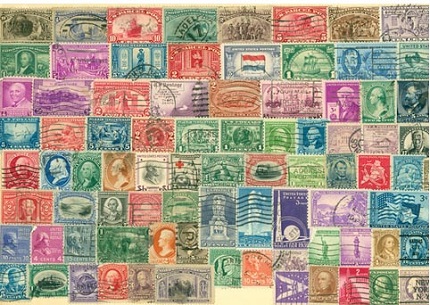
Although I labored in France, Belgium, and Switzerland, I was not moved to collect their postage stamps. Most post-WWII stamps were simply utilitarian.
In the years since then I confined my collecting to purchasing sheets or plate-number blocks of American commemorative stamps at the post office, until about 20 years ago I switched to purchasing, from a service, first-day covers as they were issued.
In the 1960s, I went into a Paris post office to buy stamps to send a letter to my wife. I was pleasantly astonished to see France was issuing one or two large stamps (averaging 2 x 1 3/4") each year featuring an actual work of art and honoring its artist.
I bought the art stamps, not to put on Fran’s letters but to keep. Then whenever I returned to France, on the average of every two years, I’d go to the Bureau of Posts and Telegraphs and buy the new art stamps.
These yearly stamps covered a wide range of art from classical things in French museums to artists currently making waves on the French art scene.
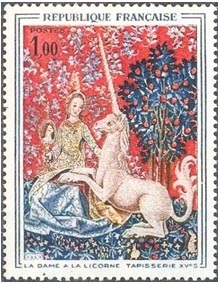
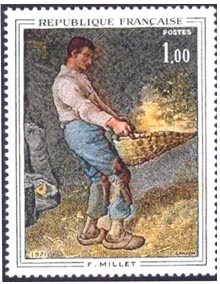
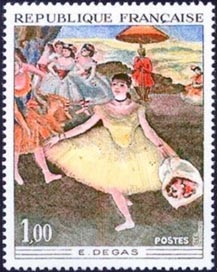
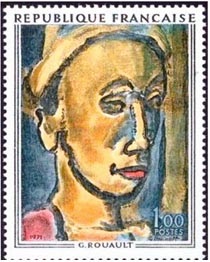
Some years ago I learned that one of my grandsons had a serious interest in collecting. I gathered up a big mixture of loose stamps, including my French art stamps, and sent them off to him.
I was surprised while writing this “Moments” to discover I still possessed three stamps: Millet, Degas, and Rouault.
In 1940, the United States issued five regular-sized stamps honoring five American artists. They bore no reference to the art, only images of the artists. We have done better since then, particularly in some of the Christmas stamps, to show original art. I illustrated an earlier “Moments” article about Mary Cassatt with the American postage stamp showing one of her paintings.
France is a nation of artists, and in the nation’s stamps one can find a wide spectrum of beauty, drama, sneaky cunning, and fun — more, I think, than in any other philatelic domain. But for this “Moments”, I’ll concentrate on the art series, which, as nearly as I can determine, has come to an end.
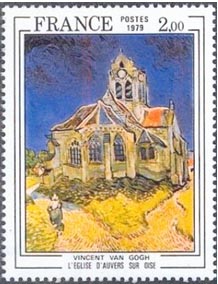
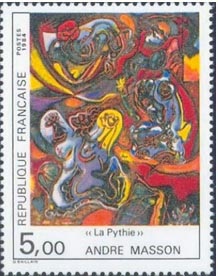
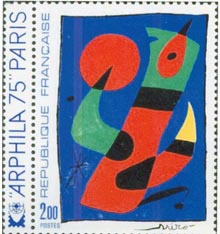
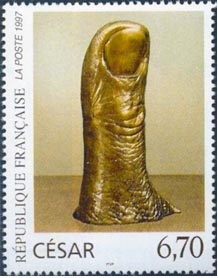
Note: in succeeding years postal rates kept going up.
| Copyright © 2025 by Lawrence Jeppson | Printed from NauvooTimes.com |